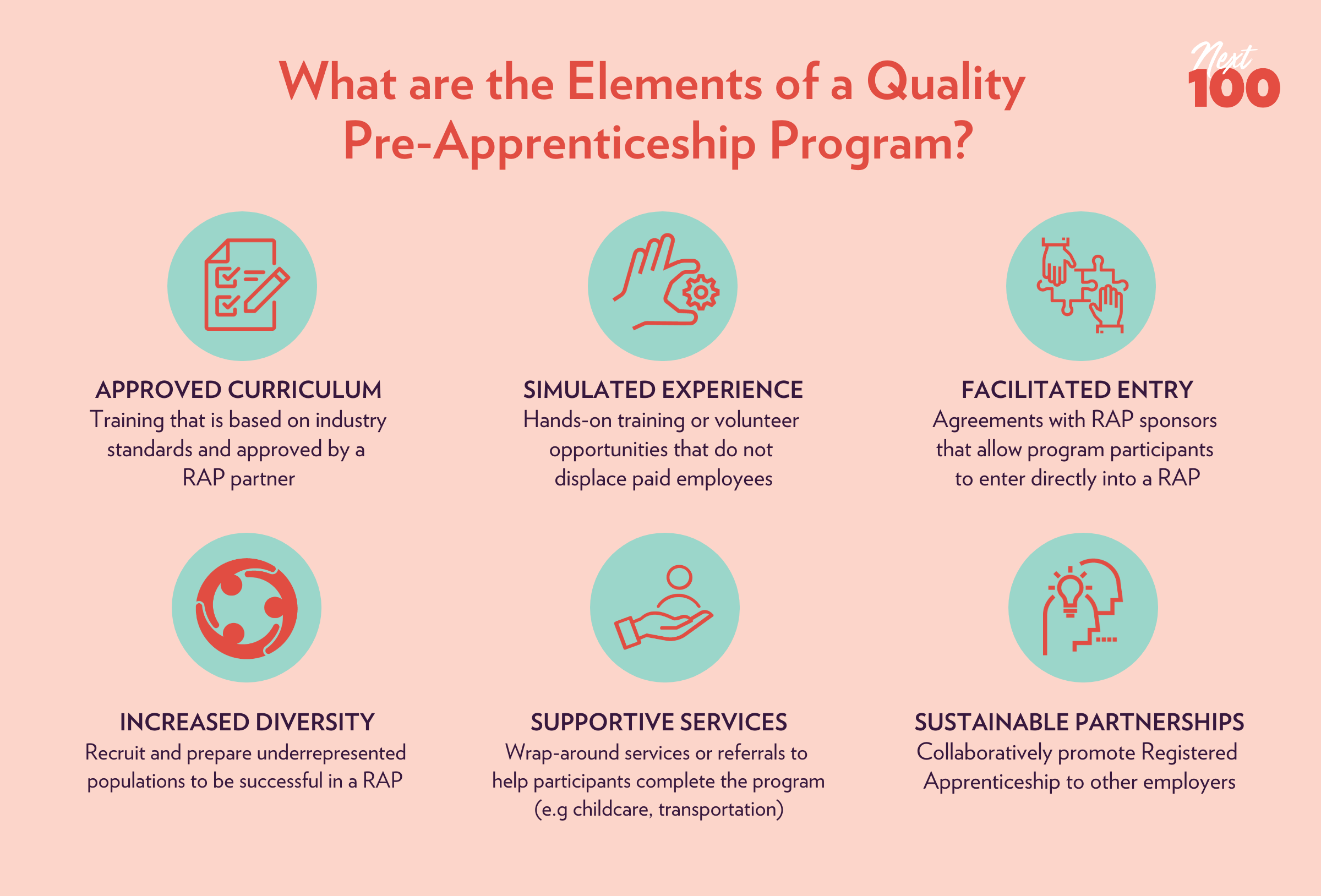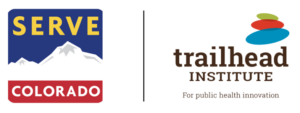Advancing Pre-Apprenticeship Programming Through National Service
This report provides grantees, state service commissions, and the AmeriCorps federal agency with recommendations and examples on how to build equitable pre-apprenticeship national service programming that provides service members with critical workforce skills and prepares them for entry into an apprenticeship or career.

Key Terms
Pre-Apprenticeship: The U.S. Department of Labor defines pre-apprenticeship programs as “a set of strategies designed to prepare individuals to enter and succeed in a Registered Apprenticeship program.” These training initiatives also effectively prepare participants for career and postsecondary pathways by supporting the development of technical and employability skills through work-based learning, on-the-job training, and classroom instruction.
Apprenticeship: The U.S. Department of Labor defines an apprenticeship as an “industry-driven, high-quality career pathway where employers can develop and prepare their future workforce, and individuals can obtain paid work experience, classroom instruction, and a portable, nationally-recognized credential.” Apprenticeship programs include both structured on-the-job learning and mentorship as well as related technical instruction delivered through classroom learning.
About This Report
Jobs for the Future, Next100, and Service Year Alliance partnered to create this report to elevate strategies and promising practices to support national service programs interested in aligning their models with pre-apprenticeship training. To develop this report, the authors interviewed the staff of a variety of national service programs who have aligned their models with pre-apprenticeship programming, as well as relevant state service commission staff, national service advocacy organizations, and federal policymakers. The field-informed findings and recommendations below offer an overview of the steps that national service stakeholders can take to engage in pre-apprenticeship and provide highlights from successful programs around the country. This report is broken into three parts: 1) strategies and tactics for national service programs, 2) recommendations for state service commissions to help them support programs in the field, and 3) recommendations for the AmeriCorps federal agency to help strengthen and expand opportunities for alignment with pre-apprenticeship training. This is not intended to be a comprehensive how-to guide; instead, the goal is to introduce national service stakeholders to the concept of pre-apprenticeship and its principles, as well as the various opportunities, partners, and practices that can be leveraged to expand post-service pathways for corps members.
Introduction
National service programming has a long track record of launching corps members into a wide variety of careers. With the recent passage of the Infrastructure Investment and Jobs Act and Inflation Reduction Act, billions of new dollars are set to flow into the economy as the United States makes a once-in-a-generation investment in infrastructure, green energy, and health care. Yet, the United States is in the midst of a workforce shortage and lacks adequate pathways necessary to fill the jobs of the future. New and existing apprenticeship and pre-apprenticeship programs will play a central role in connecting the next generation of workers to these opportunities. This is a pivotal opportunity for the national service ecosystem to prepare the next generation of civic leaders to enter these careers by embracing workforce pathway models including pre-apprenticeship and apprenticeship programming.
National service programs can offer powerful workforce development opportunities for the individuals they engage, especially young adults. Market research studies conducted by Service Year Alliance indicate the growing importance that young people view service as more than a gap year, and instead clearly understand how the experience will assist them in achieving their next steps in life. Furthermore, Service Year Alliance’s Pathways After Service Report demonstrates that well-designed national service programs provide corps members with the opportunity to gain the technical and employability skills that are valued by a wide range of employers and Registered Apprenticeship Programs (RAPs, or Registered Apprenticeships). For many AmeriCorps programs, it will not take a dramatic shift in design to serve as effective pathways to family-sustaining careers and quality RAP opportunities. In many cases, only minor adjustments are needed for programs to adopt pre-apprenticeship models and engage the apprenticeship system.
As a result of lessons and insights gained through research and interviews for this report, the authors have chosen to focus on best practices and recommendations to help national service programs integrate a pre-apprenticeship model for three main reasons:
- Integrating service with pre-apprenticeship programming offers some of the most innovative, equitable, and replicable workforce development training models within the national service ecosystem.
- Adopting a pre-apprenticeship curriculum is an opportunity to increase a program’s value proposition by creating clear post-service pathways for corps members.
- Aligning with the pre-apprenticeship model can enhance recruitment and outreach efforts for service organizations and help to drive diversity, equity, inclusion, and accessibility.
Additional benefits of aligning service with pre-apprenticeship models include increased flexibility to advance workforce development efforts, ability to expand employer partnerships and provide corps members with advanced standing in a Registered Apprenticeship, and opportunities to enhance the service experience through structured career exploration, mentorship, and wraparound services. Pre-apprenticeships also provide members with critical opportunities for career exploration, quality mentorship, and social capital accumulation, as well as wraparound services.
High-quality pre-apprenticeship program models not only incorporate the development of technical and employability skills, but also build off the existing ability of national service programs to provide participants with the professional support they need for long-term success.
High-quality pre-apprenticeship program models not only incorporate the development of technical and employability skills, but also build off the existing ability of national service programs to provide participants with the professional support they need for long-term success. Pre-apprenticeship programming can also strengthen existing efforts on the part of service programs to provide personal support and life skills to corps members by increasing opportunities to leverage community resources, provide wraparound services, and support the exploration of post-service career and education pathways. While there is not a federal registration process for pre-apprenticeship programs, the U.S. Department of Labor has issued guidance on key elements that should be included. These elements, outlined in “Training and Employment Notice 13-12,” include approved curricula, simulated work experiences, facilitated entry into a RAP, an emphasis on increased diversity, supportive services, and sustainable partnerships.
Why the focus on pre-apprenticeships instead of on registered apprenticeships?
Although this report is focused on highlighting pre-apprenticeship programming, it is in no way meant to discourage stakeholders from incorporating service into existing RAPs or from exploring opportunities to formally register service programs as apprenticeships. As more national service programs align with pre-apprenticeship, there is a growing interest in exploring opportunities to build RAPs that include service as a training component. This process however, can be lengthy and requires complying with federal or state apprenticeship standards to become a RAP. However, the authors interviewed two national service RAPs (The Trailhead Institute in Colorado and Mt. Adams Institution in Washington) that provide exemplary opportunities for corps members and serve as great examples for further exploration into this approach. In Appendix A of this report, there is information on these two programs and additional resources on how to combine AmeriCorps and Registered Apprenticeships.
Recommendations for National Service Programs
This section looks at strategies and tactics that national service programs can employ to align and integrate service activities into a pre-apprenticeship model.
1. Assess the intersection between the workforce ecosystem and the program model.
Creating strong relationships with employers, industry partners, labor unions, and workforce development agencies is critical for achieving success when building effective pre-apprenticeship programming. Ideal partners will value corps members, understand the value of their service, and support the development of high-quality workforce development trainings that are responsive to sector needs. Service Year Alliance’s Skills Attainment Curriculum contains several relevant resources, including information on mapping member skill development, rubrics to structure and organize this training for corps members, and information for program staff on how to identify and create collaborative relationships with key workforce development partners.
The Skill Mapping Development Tool contains worksheets that help program staff identify the skills that their corps members typically acquire during their term of service so that they can be mapped to potential occupations supported by local RAPs. This tool can also help program staff identify skills that the program may want to think about intentionally incorporating into its training and development plan to better align with specific RAP opportunities.
Creating Rubrics is an online training that leads program staff through developing rubrics that will assist corps members in documenting their skills attainment and growth throughout the service year. This training also includes a Blank Rubric Template that can be used for skills that are unique to a specific program model.
Connecting to Employers Guide for Program Staff is designed to assist staff in the process of establishing mutually beneficial relationships with employers, workforce development boards, and RAPs.
2. Assess workforce opportunities and establish and expand relationships.
Once program staff have gained a general understanding of the intersection between their program model and the workforce ecosystem, the following steps can be considered to further connect the program to pre-apprenticeship opportunities.
Determine if the state has its own formal processes for recognizing pre-apprenticeship. The U.S. Department of Labor does not have a formal process for recognizing pre-apprenticeship programs; however, several states formally recognize, register, and approve pre-apprenticeship training to support program quality. The Department of Labor and Office of Apprenticeship offices can provide up-to-date information regarding state policies or pre-apprenticeship. Additionally, Jobs for the Future has a helpful resource titled “Modern Apprenticeships Need Modern Preparation: Five Reasons States Should Recognize Pre-Apprenticeship Programs” that also provides information on states that are advancing pre-apprenticeship standards.
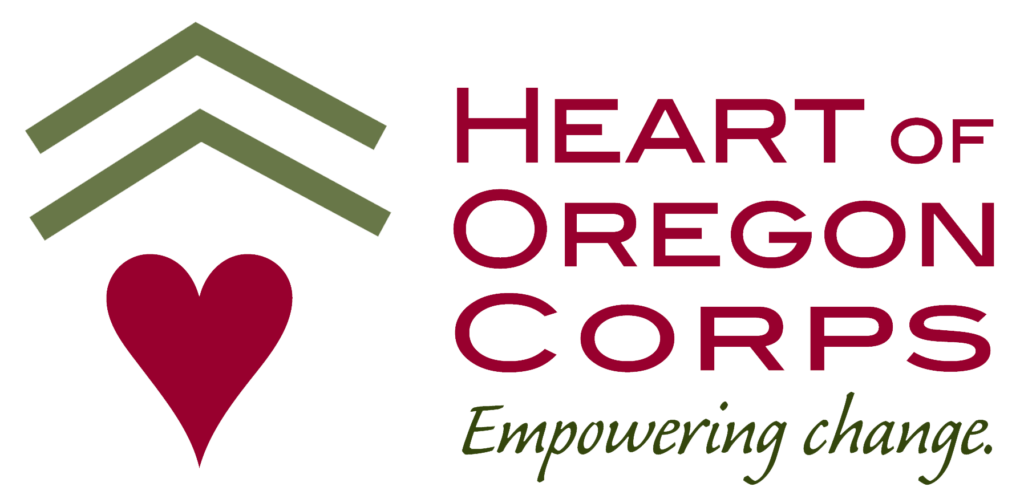
Best Practice: Understand the State Pre-Apprenticeship Certification Process
Organization Spotlight: Heart of Oregon Corps, Oregon
Heart of Oregon Corps offers a variety of service year opportunities and administers both AmeriCorps and YouthBuild programming. Its six programs engage 225 youth annually in meaningful, growth-filled workforce development and educational opportunities that help address the negative impacts of poverty. Members are primarily opportunity youth ages 16–24 who are disconnected from school and work but are ready to thrive with adequate support. Heart of Oregon programs provide career readiness training in conservation, construction, child care, and customer service.
The Oregon Bureau of Labor and Industries must certify pre-apprenticeship programs in the state. Because the pre-apprenticeship certification process can often take up to two years to complete, Heart of Oregon offers both certified pre-apprenticeship opportunities in areas such as construction, as well as informal pre-apprenticeship programming that can feed into apprenticeship opportunities in sectors such as construction, forestry, and early childhood development. They work closely with The Corps Network, YouthBuild USA, and their state agencies to align programming and build relationships with employers in multiple fields.
Engage a variety of partners to assess the workforce needs and opportunities that exist within the program’s service area. This includes working with entities that can help access labor market data, facilitate connections to employers and apprenticeship sponsors and programs, provide wraparound services, and support the recruitment of corps members. Below are resources that list stakeholders that programs should engage to assess the workforce needs and opportunities in a service area. (Relevant resources are linked; in the cases where a centralized online resource is not available, no link has been listed.):
- Workforce partners:
- Local and community partners:
- Chambers of commerce
- Community-based organizations (2-1-1 can be a helpful tool)
- Vocational rehabilitation
- Department of Aging and Rehabilitation
- Department of Youth and Family Services
- Educational partners:
- Community colleges and vocational schools
- K–12 system
- Alternative education programs
- Bridge programs
In collaboration with workforce partners, identify if there are funding opportunities that can help support the program by addressing local workforce development needs. Funding opportunities include Workforce Innovation and Opportunity Act (WIOA) (For more information on WIOA funding, please see Recommendations for State Service Commissions), federal and state grants and contracts related to apprenticeship and work-based learning, SNAP Employment and Training (E&T), and more. Workforce partners can play a critical role in facilitating the braiding and blending funds to maximize support for corps members.
Identify specific employers and apprenticeship programs to partner with in alignment with the service experiences of corps members. Collaborate with employers and apprenticeship programs to cross-compare the skills and competencies required for a job or apprenticeship program with the skills and competencies gained through the service activities offered by the program. When working with apprenticeship sponsors and programs, determine if the skills gained through service could count towards the training requirements of the RAP and provide an individual with advanced standing towards the completion of the RAP.
Build relationships with employers and apprenticeship sponsors that support equity and access to quality jobs and diverse career pathways. Ensure that the employer’s values align with those of the organization and that the post-service employment and training opportunities they offer are equitable and accessible and support long-term economic advancement. This is important for ensuring that individuals are successful in advancing in a career pathway. Programs can develop tools, like this template from PowerCorpsPHL, to use with employers to vet and assess the opportunities they can offer.
Grow relationships over time through multiple touchpoints, engagements, and activities. Specific examples include inviting employer partners to site visits so they can meet corps members and engaging them in service projects related to their business operations (e.g., corps members installing solar panels, etc.). This will help them understand how service is preparing corps members for their workforce.
It is also recommended that program staff engage employers in speaking events or career fairs that provide them with an opportunity to inform corps members about their company, culture, positions, and RAP opportunities. Programs have observed that engaging actual company employees who have gone through the RAP in these types of events rather than HR representatives typically produces the best results. Also, determine if there are opportunities for corps members to job shadow employer partners and engage employers as mentors.
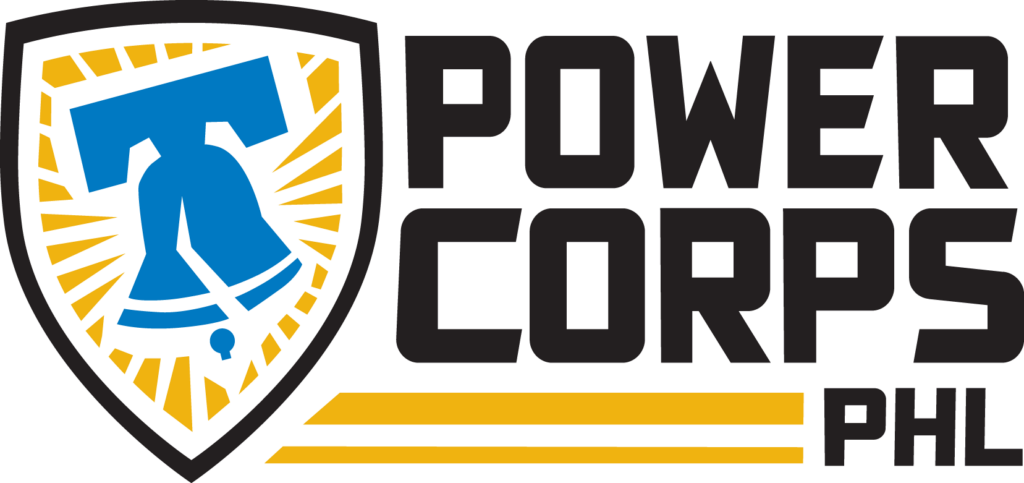
Best Practice: Utilize Relationships with Partners to Build Post-Service Career Pathways for Members | Program Spotlight: PowerCorps PHL, Pennsylvania
PowerCorpsPHL is located in Philadelphia. Each year, PowerCorpsPHL engages between 100 and 125 unemployed or underemployed Black and Latinx Philadelphians ages 18–30 in immersive four- to twenty-four-month pre-apprenticeship programming. Graduates of the program earn preference points in the City’s Civic Service process; automatically receive a lifetime professional network, including alumni career services; and, if they choose, earn industry-driven credentials.
PowerCorpsPHL’s partners with public and private entities such as Philadelphia’s Water Department and Energy Authority to create pipelines for corps members to enter into unregistered apprenticeship positions with these agencies after completing their term of service. To address an area of high interest expressed by corps members, PowerCorpsPHL is also exploring a new partnership with a local community college that will enable the program to embed pre-apprenticeship programming focused on early childhood education apprenticeships.
Convert informal relationships with employers and apprenticeship sponsors into formal partnerships to facilitate member entry into post-service opportunities. Once there is a successful relationship with an employer partner or apprenticeship sponsor, it is important to formalize the relationship in a way that supports corps members’ access to post-service opportunities. Specific practices to implement include the following:
- Have employers make commitments to hiring corps members after service.
- Request that employers provide preferential hiring/selection status to corps members.
- Work with employers and RA sponsors to support access to advanced standing for corps members by counting hours of service towards training hour requirements for their programs.
- Engage employers in mentorship to support a corps members’ career exposure and readiness for the workforce.
- Continuously assess and align skills and competencies gained through service with the changing needs of job and apprenticeship opportunities.
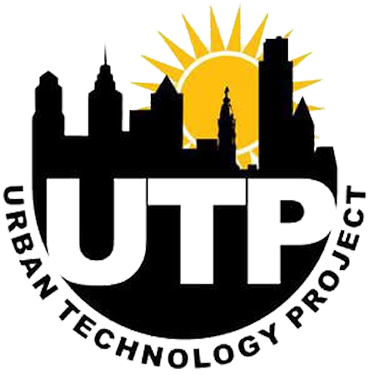
Best Practice: Create a Post-Service Pipeline into a Registered Apprenticeship Program
Program Spotlight: The Digital Service Fellows, Pennsylvania
The Urban Technology Project’s Digital Service Fellows is an AmeriCorps program that is a collaboration between Launch Philadelphia (Communities in Schools of Philadelphia), a nonprofit that provides services to help students stay in school, and the School District of Philadelphia, focusing on opportunity youth. The program incorporates pre-apprenticeship programming that is geared toward Philadelphia high school graduates who are interested in careers in the information technology (IT) sector.
Corps members who excel in the program have the opportunity to interview for a Registered Apprenticeship Program that is housed within the public school system, which leads participants into family-sustaining careers in IT. The program has a strong focus on providing corps members with personal and professional wraparound supports and places roughly 80 percent of the pre-apprenticeship graduates.
3. Ensure equity and access in pre-apprenticeship programming.
When building pre-apprenticeship programming, it is critical to ensure these programs are accessible for all members. Below are tactics and strategies to help national service programs drive diversity, equity, inclusion, and accessibility within their programs.
Prioritize high-quality program design. National service programs can leverage promising practices in pre-apprenticeship to support high-quality program design that will advance equity and access for all corps members. These practices include the following:
- Establish clear and transparent entry requirements and help participants fully understand the expectations of the pre-apprenticeship program.
- Align skills with those sought by employers and the industry writ large.
- Provide at least one-industry recognized credential aligned with the local labor market.
- Engage with employers and industry leaders to co-design and, when possible, facilitate training.
- Implement accessible design practices to ensure that physical training spaces, service sites, and classroom instruction and materials are accessible to all corps members.
- Develop recruitment and outreach strategies that are reflective of the community and meet potential corps members where they are.
- Create intentional and consistent opportunities for corps members to provide feedback and inform the design and implementation of the program.
- Use equitable data practices to support continuous program improvement by assessing member experience, program accessibility, and post-service outcomes.
Programs can also support equity and access through the inclusion of career exploration activities and wraparound services. Career exploration can include contextualizing skill-building, providing career navigation services, and engaging corps members in reflection to help them think about their long-term goals and how their service experience supports their attainment. Wraparound services promote equity and access by removing barriers to participation for corps members. They can include providing resources and services to address barriers related to transportation, housing, child care, food access, and health care; securing identification documents; obtaining a GED; mental health support; emergency financial assistance; and more. These supports can be provided in-house or through robust referral processes with community partners such as local nonprofits, vocational rehab agencies, public housing authorities, and local workforce boards.
 Best Practice: Utilize Training Curriculums to Support the Creation of Quality Program Design | Curriculum Spotlight: The Multi-Craft Core Curriculum
Best Practice: Utilize Training Curriculums to Support the Creation of Quality Program Design | Curriculum Spotlight: The Multi-Craft Core Curriculum
TradesFutures is a non-profit organization that develops, promotes, and improves Apprenticeship Readiness Programs. They administer the Multi-Craft Core Curriculum (MC3), a 120-hour pre-apprenticeship curriculum that is leveraged by multiple YouthBuild programs to support the transition of YouthBuild graduates into a variety of apprenticeships in the construction industry. This is one example of how a quality training curriculum can be leveraged to support quality pre-apprenticeship program design.
The factor that distinguishes the MC3 from other pre-apprenticeship curricula is that it can only be delivered with the express permission of a state or local building trades council. Organizations, including AmeriCorps program models, that wish to offer the MC3 credential must complete an implementation plan approved by the building trades council and TradesFutures. The implementation plan requirement ensures that programs that utilize an MC3 curriculum develop a partnership with the local building trades councils. This training curriculum provides an example of how a curriculum can be leveraged to support quality pre-apprenticeship program design.
Showcase multiple career off-ramps. Pre-apprenticeship training is, first and foremost, a way to prepare individuals for a Registered Apprenticeship program, but it can also support successful entry into postsecondary education and the workforce. Not every corps member will choose to pursue an apprenticeship opportunity, but by embedding career exploration, supportive services, and mentorship into the pre-apprenticeship and service experience, programs can help corps members access the pathway that is right for them. Below is a list of online resources that help to embed these types of important elements into the program model:
- Roots to Success
- Interstate Renewable Energy Council’s Career Maps
- Wisconsin’s Vocation Schools’ Career Videos
- The Building Performance Institute’s Job Insight Tools

Best Practice: Build Off-Ramps into Apprenticeships Opportunities
Organization Spotlight: Civic Works, Maryland
CivicWorks, a non-profit that administers multiple AmeriCorps programs, provides robust job training and skill development for members during service. This organization aims to strengthen Baltimore’s communities through education, skills development, and community service.
CivicWorks partnered with The Corps Network and Jobs for the Future to develop and offer three-month AmeriCorps terms of service that incorporate pre-apprenticeship programming in Maryland. The pre-apprenticeship provides members with on-the-job-training and related technical instruction and supports members’ entry into the National Association of Landscape Professionals Landscape Apprenticeship Program. By completing their term of service, CivicWorks corps members are awarded 200 hours toward the completion of the 2,000-hour Landscape Professional Registered Apprenticeship Program and advanced standing in the program.
4. Clearly understand the 80/20 rule.
Many national service stakeholders cite Americorps’ 80/20 rule as a barrier to pursuing pre-apprenticeship programming. This rule states that only 20 percent of a corps member’s time can be spent on training and development activities. However, there is more flexibility in this rule than programs may realize, and it is important to keep the following in mind to ensure that this rule is not a substantial barrier to pursuing pre-apprenticeship programming.
Depending on the type of service, the 80/20 rule allows for a moderate amount of training time. For example, a member serving in a full-time term (1,700 hours) can spend roughly 340 hours, or 42 full days, in training. Furthermore, the 20 percent cap is aggregated across the entire corps. This means that if the majority of members within the program do not fully utilize their allotted training days and hours, those days and hours can be applied to other members who have exceeded the 20 percent cap. Finally, “on-the-job” training is considered direct service, not training time.
While it is important to be mindful and in compliance with the 80/20 rule, it should not be seen as an insurmountable barrier. If a program’s internal corps member timekeeping policies align with the considerations outlined above, there should be ample opportunity to incorporate the training and development activities associated with pre-apprenticeship into the service program design.
Recommendations for State Service Commissions
This section offers specific recommendations to help state service commissions support programs in the field in their efforts to partner with, engage in, and align service activities with pre-apprenticeship training.
1. Engage and coordinate with state and local agencies to create joint pre-apprenticeship programming with braided funding streams that meet state needs.
State service commissions should reach out to their state department of labor, state workforce development agency, or governor’s office to build relationships and better understand both state-level workforce needs and state pre-apprenticeship standards and guidelines. These partners play an important role in helping stakeholders understand the state workforce landscape and can provide access to resources, capacity, and partnerships. Below are specific actions state service commissions can take to engage with state-level partners:
Request copies of annual reports on state workforce needs, which can include information on in-demand occupations and credentials, training programs, promising employers, and funding. These can offer important insights to national service programs interested in engaging with pre-apprenticeship.
Provide feedback on shared workforce development objectives developed by the governors’ offices and state agencies. Offer to help build stakeholder knowledge and understanding of national service, its role in workforce development, and how it can support interagency efforts to advance workforce development objectives.
Request to be notified of federal and state workforce funding, which can add capacity to national service programs and help them to build pre-apprenticeship training.
Approach state agencies set to receive formula program dollars, through the Infrastructure Investment and Jobs Act and the Inflation Reduction Act for workforce development purposes, with proposals on how national service pre-apprenticeship programming can help the state meet its workforce needs.
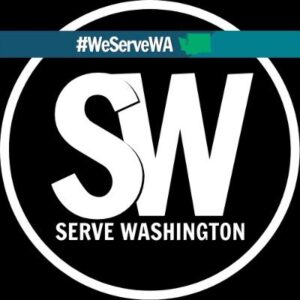
Best Practice: Partner with State Workforce Development Boards to Build Innovative AmeriCorps Programming
State Service Commission Spotlight: Serve Washington
Serve Washington is the AmeriCorps state service commission for Washington State and is charged with administering State and National AmeriCorps funding in the state. Commission staff chose to prioritize funding for AmeriCorps programs with a workforce development focus on high-growth industries that offer a family-sustaining wage, and that young people have demonstrated an interest in. Serve Washington has been developing a working relationship with their state-level workforce development board, and there is a collective understanding between the two entities that they have to work together to be effective in meeting state-level needs. They meet semi-regularly to identify ways that they can work together to create service programs to meet state needs.
One example of this collaboration is the IT Service Corps pilot program with Washington Service Corps. Serve Washington and the state workforce development board recognized there is a digital divide in the state, as well as youth interest in entering a technology career. They reached out to the Washington Public Libraries to partner with them to create an IT Service Corps focused on training underserved individuals for careers in IT. Serve Washington and the state workforce development board also worked together to put forward funding requests to the state legislature to support this initiative. Serve Washington takes an active role in advocating for service with the state legislature, and they often partner with the state workforce development board to put forward legislative agendas that intertwine workforce and service needs of the state.
2. Partner with the state department of labor and local workforce development boards to leverage WIOA funding.
WIOA is legislation designed to remove barriers to work for youth and adult workers and learners. These funds support access to employment, education, training, and supportive services. Funds are administered by local workforce partners in two categories: WIOA Youth and WIOA Adult. Youth funds are accessible to out-of-school youth ages 16–24, and in-school youth ages 14–21 who meet required eligibility criteria. Youth funds are often used to provide tutoring, alternative school services, postsecondary preparation, mentorship, financial literacy and counseling, skills training, and paid and unpaid work experiences, such as summer employment, job shadowing, internships, and pre-apprenticeship training.
WIOA funding can provide additional resources for workforce development training and wraparound services for members enrolled in pre-apprenticeship programs. State service commissions should partner with their state departments of labor, local workforce development boards, and any other relevant state or local entities to leverage WIOA dollars to support corps members in their state. (More information on the challenges of accessing WIOA dollars and potential federal solutions are included in the section “Recommendations for the AmeriCorps Federal Agency,” below.)
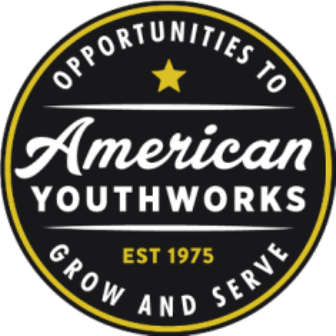
Best Practice: Braid WIOA Funds with AmeriCorps Grants to Provide Wraparound Services for Members | Organization Spotlight: American YouthWorks, Texas
American YouthWorks provides paid opportunities for young people to gain valuable job skills and career exposure through the multiple AmeriCorps, YouthBuild, and independent service year programs that the organization has operated throughout its long history in Texas.
American YouthWorks places a strong emphasis on providing wraparound services and support to corps members, including counseling, basic needs assistance, child care assistance, college readiness, and a re-entry track for young people exiting the criminal justice system. The organization has successfully leveraged WIOA funding to help provide these supports to both youth and young adults serving in their programs.
3. Prioritize quality pre-apprenticeship programming and workforce development training in grantmaking decisions, and provide technical assistance to national service grantees.
State service commissions can help national service programs align with pre-apprenticeship training by emphasizing this model in grantmaking decisions. To do this, commissions should do the following:
- In funding announcements, emphasize the importance of quality pre-apprenticeships and workforce training that prepares corps members to transition into RAPs or full-time paid positions after service.
- Implement a process for scoring pre-apprenticeship engagement using rubrics or assessments aligned with USDOL requirements and through the establishment of quality benchmarks, such as providing credentials to participants.
- Provide technical assistance to national service programs through resources, coaching, and peer connections to help them properly align with the training model and reach benchmarks set forth in funding opportunities.
- Partner with diverse stakeholders to develop trainings to help grantees develop their programs. These partners can include state departments of labor, local workforce boards, national AmeriCorps organizations like The Corps Network and YouthBuild, and service and workforce development organizations like Service Year Alliance and Jobs for the Future.
Below are a few resources that can help commissions when considering quality benchmark development:
- Department of Labor Pre-Apprenticeship Guidance
- Jobs for the Future’s Pre-Apprenticeship Resources
- Wisconsin’s Pre-Apprenticeship Program Guide
- Pennsylvania’s Pre-Apprenticeship Grant Guidelines
 Best Practice: Create Industry-Relevant Certification Opportunities
Best Practice: Create Industry-Relevant Certification Opportunities
Program Spotlight: Energy & Water Conservation, Colorado
Mile High Youth Corps’ Energy and Water Conservation Program engages 18–24-year-olds to provide free in-home energy and water audits and upgrades to low-income residents in Colorado. Corps members, working on small team-based crews, provide one-on-one client education and coaching for water and energy conservation improvements and act as community resource agents when visiting households.
While serving, corps members earn industry-recognized certificates such as the Roots of Success Pre-Apprenticeship Environmental Specialist Certificate and the Building Performance Institute’s Building Science Principles Certificate, both of which expose corps members to multiple post-service pathways and apprenticeship opportunities. Mile High Youth Corps also provides corps members with robust wraparound support services to mitigate barriers to success, such as child care, housing, and transportation.
4. Partner with and support programs in collecting post-service corps member outcomes in pre-apprenticeships.
To provide quality pre-apprenticeship programming, state service commissions should track data on outcomes through exit surveys and post-service data collection. This will help to build a better understanding of corps members’ experiences and their post-service outcomes. State service commissions can consider allocating funding to support common technology and technical assistance to programs to enhance their ability to track post-service outcomes. Metrics that state service commissions should collect in partnership with programs on post-service member outcomes include the following:
- Program completion
- Post-service placement of corps members (for up to one year)
- It is recommended that this data be tracked at the half-year and one-year mark to get an accurate snapshot of post-service activities over time.
- Post-service education opportunities can include postsecondary education, direct entry into the labor market, Registered Apprenticeship, other occupational skills training programs, and additional terms of service.
- Post-service outcomes of corps members
- Corps members’ wages in their post-service positions
- Credential or degree attainment
- The fields and industries corps members move into after service and if they align with the focus of their service
- Continued engagement in the public service sector
- Whether corps members go on to work in high-need geographies
5. Work with pre-apprenticeship programs and industry providers to help corps members understand how to use their education awards.
Many programs reported that they were unsure whether or how corps members could use their education award for training opportunities with workforce development organizations or industry partners. Commissions should leverage their expertise to assist industry partners and training organizations in understanding acceptable uses of the AmeriCorps education award for skill-building, training, and apprenticeship opportunities. This may help to increase education award attainment and use and ensure that these dollars can be leveraged to drive equity and access to Registered Apprenticeship and postsecondary pathways with community and technical colleges.
Similar training can be done with national service programs so that they can improve their organizational knowledge of how these awards can be used and are better positioned to support workforce partners in these discussions. Additionally, it would be beneficial for commissions to ensure that programs and members in their state know that education awards can be used to cover education expenses unrelated to tuition, such as books and course materials. America’s Service Commissions has developed a slide deck that can be used to help educate stakeholders on strategies for leveraging the Segal Education Award.
Recommendations for the AmeriCorps Federal Agency
This section outlines key recommendations for the AmeriCorps federal agency to help foster connections between national service programs and pre-apprenticeship training. These recommendations address beneficial activities like revisiting rules, regulations, and provisions; providing additional guidance; enhancing funding and support for state commissions and programs that pursue pre-apprenticeship and workforce development-focused models; and building better off-ramps to help members access post-service opportunities. While some of the below recommendations can be driven by AmeriCorps, it is important to note that many cannot happen in isolation and require partnership and collaboration with other federal agencies.
1. Provide clarification to programs on how to offer increased flexibility to corps members leaving service early for employment opportunities.
According to AmeriCorps rules (see 45 CFR § 2522.230), a member may only leave their term of service early if they are released for a “compelling personal circumstance” or “cause.” Members who leave their service term early are ineligible to receive their education award. This rule creates a particular burden for members that are offered time-sensitive employment opportunities or who lack the financial privilege to turn down a better-paying job to complete a service term.
There is, however, one exception in the rule which specifies that if the program includes the promotion of employment among participants in its approved objectives, then the member may receive a partial education award if they leave the program early. Many programs and commissions are unaware of this provision and are unsure how to gain approval. When promoting workforce development as part of future notices of funding opportunities, the AmeriCorps agency should promote this provision to programs and commissions and provide clarity on how applicants can demonstrate promoting employment as an approved program objective, such as including the information as part of the Program Design or Logic Model section of the grant application.
2. Provide additional clarity on allowable uses of the Segal Education Award.
National service programs interviewed for this report noted widespread confusion from corps members on how to use the Segal Education Award, including where they were allowed to utilize the award and how dollars could be spent. For pre-apprenticeship programs, there was widespread confusion on how the award could be used for certification programs, community college credits, or other workforce-focused trainings, including Registered Apprenticeships. Clarification from the agency on the range of ways that the education award can be utilized would help state service commissions, programs, and corps members better understand how to use their awards for training opportunities.
3. Coordinate with the U.S. Department of Labor (USDOL) to help make WIOA funding more accessible to national service programs.
USDOL launched the Yes, WIOA Can! Campaign in 2023, with the goal of specifying opportunities to invest in training and resources to help states, workforce partners, and training providers better understand how to access, leverage, and implement funding to remove barriers to work and education. WIOA has stated that through the initiative, they plan to “tout the flexibility of and dispel myths around perceived barriers of WIOA” and “elevate innovative uses of WIOA funds.”
WIOA funds can provide critical additional funding and support for AmeriCorps pre-apprenticeship programs and can be used for wraparound services and training. However, many programs reported a lack of awareness that these funds could be braided with AmeriCorps dollars, as well as difficulty in accessing or utilizing these funds. Challenges often experienced by service programs include the following:
- Omission from the WIOA Eligible Training Provider List, a designation that improves ease of access to WIOA funds in states where service has not been codified as a workforce training strategy.
- Challenges with aligning timing for applying, receiving, and administering WIOA funding with state and national AmeriCorps grantmaking timeframes and processes.
- Limited knowledge among service programs of the WIOA landscape, including how to access funding, who to partner with, and how funding can be applied to activities within the service program.
- Limited knowledge within the workforce ecosystem of the role service plays in providing quality workforce training to young adults.
- Restrictions on the ability for AmeriCorps programs to report WIOA funding as part of AmeriCorps grant requirements.
The AmeriCorps federal agency should coordinate with USDOL to provide additional guidance, trainings, and resources to help national service programs and state commissions understand WIOA. This can include guidance on how to join their state’s Eligible Training Provider List, ways to work with local partners to overcome barriers to accessing WIOA dollars, and how to leverage funding for wraparound services for AmeriCorps members. Additionally, the two agencies should also explore both short-term and long-term solutions that can help eliminate regulatory and statutory regulations that hinder the ability of national service programs to access WIOA funds.
For more information on how the AmeriCorps federal agency, Congress, and grantee organizations can better prepare AmeriCorps members for workforce success see the Next100 report, “How Embracing Workforce Development Can Set Up AmeriCorps Members for Post-Service Success.”
Conclusion
National service presents an important strategy for increasing access to work, education, and economic advancement for our country’s workers and learners. Aligning the service experience with pre-apprenticeship training can bring important structure and definition to the service experience and, in turn, help to enhance existing program design practices within national service programs. Integrating high-quality pre-apprenticeship elements into national service can support equity and access to a range of post-service pathways and provide another effective strategy for building a future workforce.
Acknowledgements
Jobs for the Future, Next100, and Service Year Alliance would not have been able to develop this resource without the help and dedication of the national service programs, state service commissions, and partners who closely supported the project. Our organizations want to extend our gratitude and appreciation to the partners listed below for sharing insights, experiences, and recommendations for this important work:
- American YouthWorks
- America’s Service Commissions
- CivicWorks
- The Corps Network
- Heart of Oregon
- Mile High Youth Corps
- Mt. Adams Institute
- PowerCorpsPHL
- Serve Washington
- Serve Colorado
- South Carolina Commission on National and Community Service/United Way of South Carolina
- The Trailhead Institute
- The Urban Technology Project’s Digital Service Fellows
Appendix A: Additional Spotlights on the Integration of Full Apprenticeship Programming into National Service
Apprenticeship Spotlight 1
VetsWork Environment, Washington
Mt. Adams Institute’s VetsWork Environment Program is the first AmeriCorps program in the nation to be recognized as a RAP by the Department of Labor and the Department of Veterans Affairs. This designation allows military veterans to access the basic housing allowance portion of their GI Bill benefits during their term of service, addressing a significant barrier to participation for veterans supporting their families. Additionally, the program is able to award military veterans 300 hours towards the completion of the 2,000-hour RAP in recognition of the skills, education, and on-the-job training that they received through their prior military service. Corps members complete the remaining 1,700 hours of the RAP program providing project support at local, state, and federal land management agencies such as the U.S. Forest Service. The training, on-the-job skills, and career exposure that corps members gain while serving with these partners enable them to pursue quality jobs in areas such as public land and natural resource management.
Apprenticeship Spotlight 2
Colorado Public Health Works, Colorado
The Trailhead Institute, in partnership with Serve Colorado, recently established the first state commission-supported AmeriCorps Registered Apprenticeship Program in Colorado, the Colorado Public Health Works program. In this program, twenty-eight AmeriCorps members will serve in regions throughout the state, while pursuing certification as a Community Health Worker and increasing the capacity of local public health agencies. The program intends to leverage additional private and public funds to help support enhancements to the corps member benefits package, as well as to help cover costs associated with corps members participating in educational components of the RAP. To meet the requirement of the RAP, corps members will participate in a total of 2,000 hours of service, on-the-job training, and classroom education, and will receive a small increase to their living allowance once they have met competency thresholds. More information regarding this initiative and the integration between AmeriCorps and apprenticeship programming can be found here, including a “Guide for Combining AmeriCorps and Registered Apprenticeships.”





